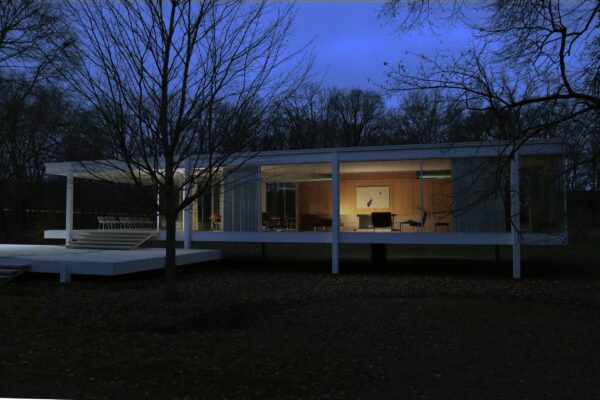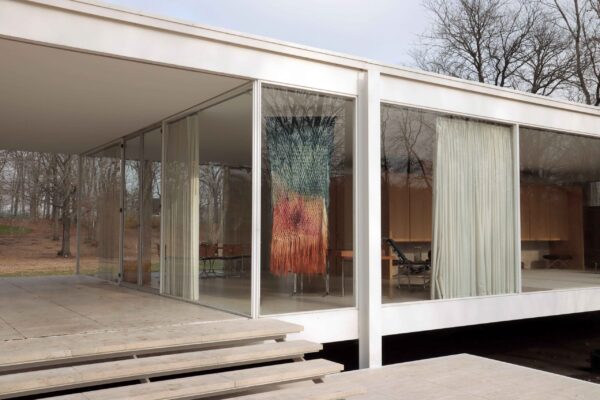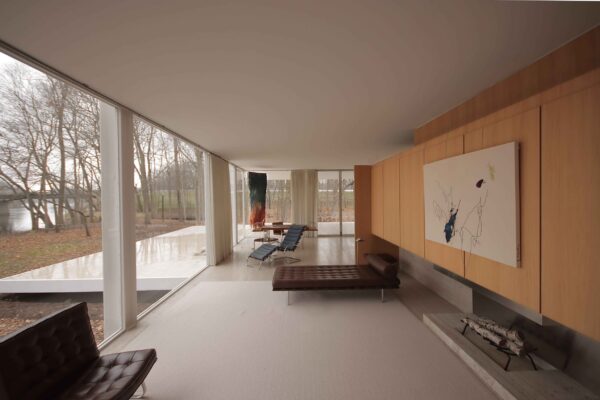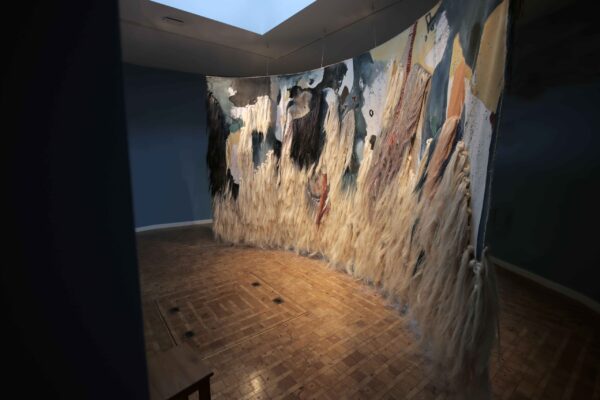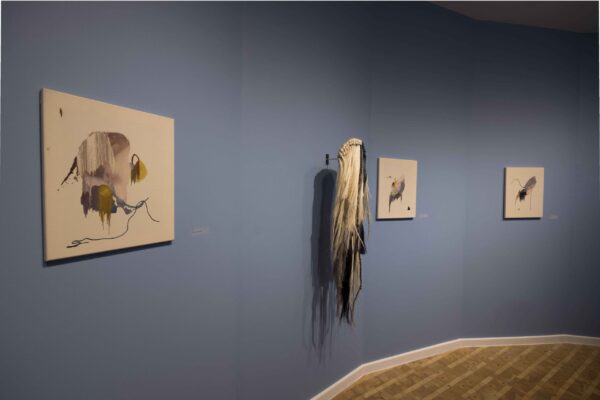When looking at the international architectural landscape, one begins to notice how the historical landmarks become more silent witnesses of our past and simultaneously offer a glimpse to what the future might hold. Architectural movements and its prominent landmarks are impactful on our understanding of what architecture today can be seen as and why is it important in order to appreciate our build environment – from the Pre-Hispanic City of Teotihuacan built between the 1st and 7th centuries A.D., in Mexico all the way to the simple line of modern architecture movement in the early 20th century.
In recent years, looking at historical landmarks in contemporary context became a field worthy of exploration: To transform the building while telling a story without losing its identity was the catalyst for the exhibition ‘Capisayo’ by the Mexican artist Beatriz Morales – a site-specific installation on view from September 28th until 8th of December 2024 at the historical Edith Farnsworth House.
Located in Plano, Illinois, the Farnsworth House, designed by Ludwig Mies van der Rohe for Dr. Edith Farnsworth, was completed in 1951 and is one of the most iconic examples of modern architecture. With its simple and clean lines, flat, horizontal footprint, white-painted steel beams, walls of glass and natural light, the single-story house is in complete harmony with nature.
Surrounded by woods and near the Fox River, the Farnsworth House has been flooded by the local river numerous times, resulting in considerable damages to the house.


